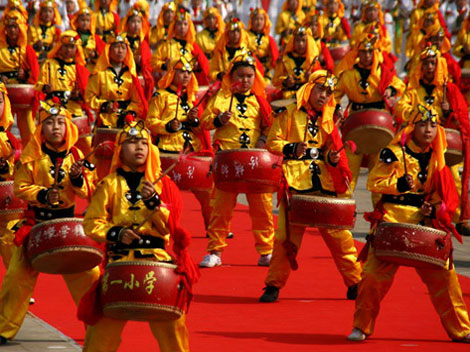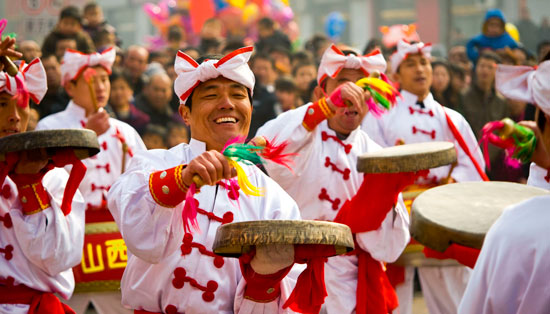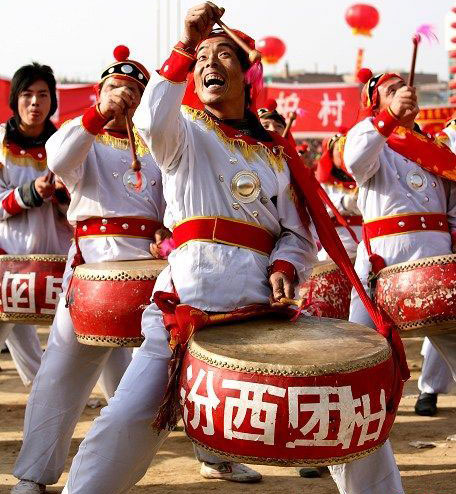
Weifeng gong and drum is a form of folk music that consists of an instrumental ensemble of drums, cymbals, gongs and small cymbals, and is characterized by simple, deep and powerful sounds. Weifeng gong and drum originated in Linfen Prefecture in North China's Shanxi Province, and boasts a history as long as over 4,000 years.

The origin of Weifeng Drum dates back to Li Shimin, the first emperor of the Tang Dynasty(618-907). Having put down a rebellion in Shanxi, his army celebrated his victory by playing Weifeng Drum. Since then, Weifeng gong and drum has spread far and wide and it is widely used in weddings and celebration ceremonies, gatherings and traditional festivities to welcome gods and exorcise evil spirits.
The technique of artistic expression of this form of art has been greatly enriched through hundreds of years of constant development, systematization and innovation by the masses, especially in terms of varieties of percussive sounds of drums, cymbals, gongs and small cymbals through unremitting innovations.

While appreciating the commanding performance of Weifeng gong and drum, one can feel the vicissitudes of history and changes of times as well as the unflinching and encouraging spirits of humankind in an artistic state of enlightenment and heroism.
A drum team ranges from 30 to over 100 performers, and their drums are of different sizes. People of all ages can take part, and in recent years there has been a rise in popularity of a number of women teams.





